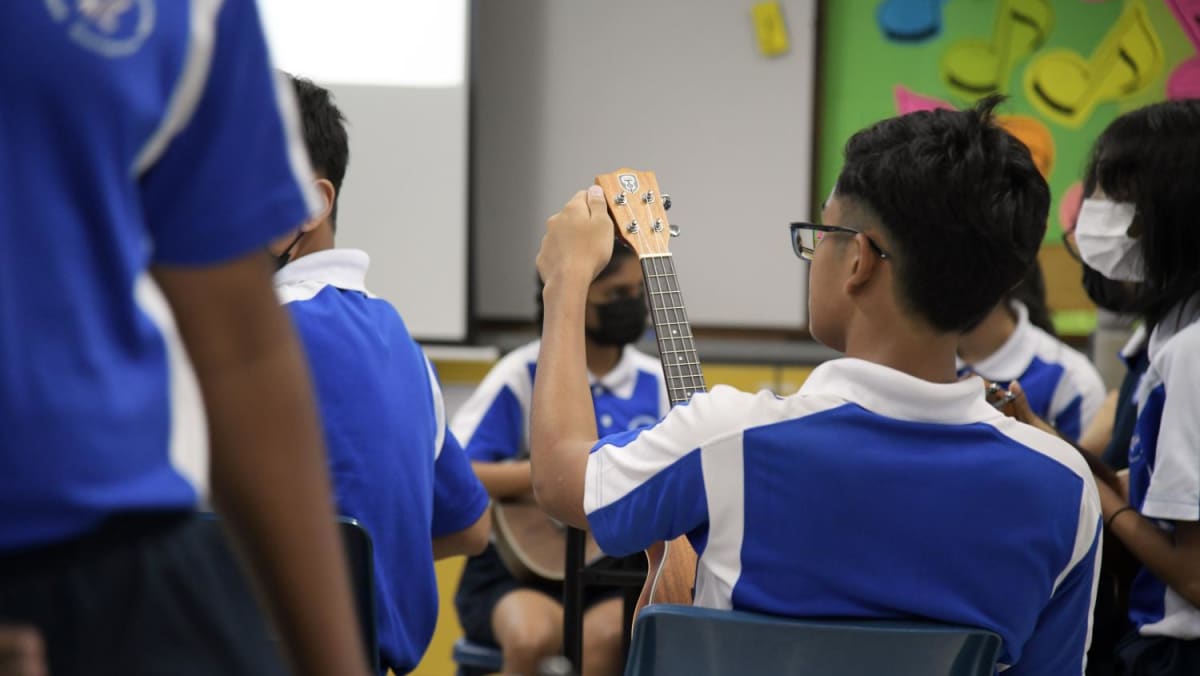CAN’T ALWAYS BE CREATIVE IN EXAMS
Teachers CNA spoke to lauded the scrapping of some exams – such as the mid-year papers for primary and secondary school levels – which has helped students to be more creative with alternate assessment methods like project work.
But on MOE’s push to encourage creativity in lessons, teachers said they have to balance this with providing “structure” for students.
For example, when it comes to exam preparation, most teachers focus on ensuring that students’ answers match the way exams are marked so that they do well.
“The syllabus requires them to answer certain questions in a certain way … So we also teach the kids that they have to follow step by step, you can’t just write anyhow. That actually restrains them from thinking out of the box,” Claire said.
For example, for Chinese language exams, more creative students might summarise a longer answer and merge multiple points into one sentence. But they may be required to have certain keywords in their answer to get full marks.
“Actually the meaning behind it is about the same. But the problem is that we still will follow the marking scheme. So it’s a bit like you’re forcing them not to be creative.”
A parent of a 15-year-old boy said that for subjects like mathematics, there is usually only one way to solve the question.
“It’s very hard for kids to look at the question and say, let’s find another way of doing this,” said Mr Aaron Koh. “You apply this formula, these are the steps, and then you get the answer. There’s no reason for you to even try another way.”
Lily, who teaches English and literature in a secondary school, said she tells her students that there are no right answers, but there are wrong answers.
“I tell them that you can have creativity in your interpretation, but what you need is strong justification for your interpretation,” she said, adding that it is easier to encourage creative expression in literature classes.
But when it comes to essay writing in English, the marking scheme is clearly divided into 10 marks for content and 10 marks for language use, and she tells her students that it is easy to score marks as long as they stay on point.
“My worry with kids is that they’re creative to the point of writing out of point,” she added.
The approach that teachers can take also depends on the profile of the students, said Paulina, who also used to teach English and literature in a secondary school up until recently.
While she had some “geniuses” among her students, she still had to cater to the majority.
“I feel like the strategy to ensure that I can help the majority of the students is really to tell them: ‘This is the exam, this is what you should write in order to cater to the exam.’ So it was very uninspiring teaching.”
Paulina thought at first that student-initiated learning – where children pursue their own interests and learn outside the curriculum – was a good idea.
While this is a ministry initiative, each school conducts this differently.
At Paulina’s school, the projects students took on had conditions and outcomes to fulfil. For example, they had to contribute to society in some way.
The requirements made the projects a chore for students and “completely ruined” their motivation, she said.
NIE’s Assoc Prof Heng said that newer curriculums aim to give students opportunities to stretch their imagination and connect them to the real world.
But it is difficult to say whether these have shown results, as it is “very much debatable” to what extent standardised test results transfer to creativity results.
Results in “Big C” creativity also need a wider ecosystem to support it, and factors outside of “Little C” parameters, said Assoc Prof Heng.
“Further, Singaporeans’ risk aversion and preference to maintain harmony may stifle their creativity along the “Big C” domain or in other types of creativity, including artistic creativity.”
